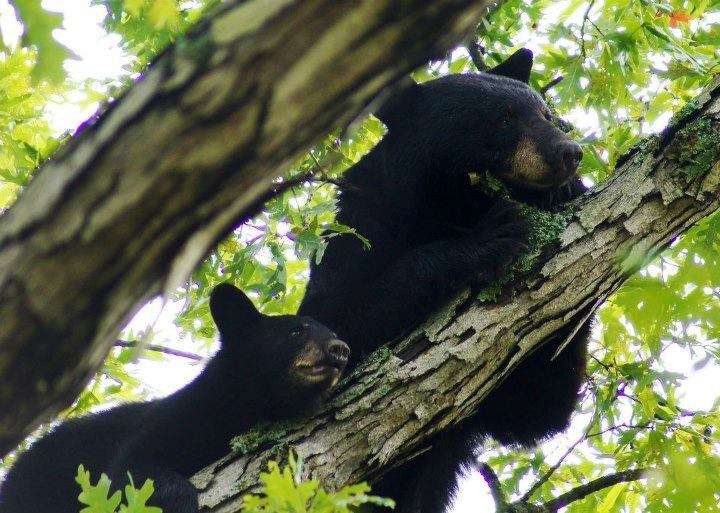Genetic maps help conservation managers maintain healthy bears

Last year, researchers at the University of Missouri published a study on genetic diversity in American black bears in Missouri, Arkansas and Oklahoma and determined that conservation management is needed to maintain healthy populations in the region. Now, those scientists have expanded the study to include black bears throughout North America. They discovered that black bears in Alaska are more closely related to bears in the eastern regions of the U.S. and Canada than those located in western regions. Details from the study revealed ancient movement patterns of black bears and provide detailed "genetic maps" that could help conservation management officials maintain healthy bear populations throughout North America.
"This is the first genomics study of black bears across their range," said Emily Puckett, who recently received her doctoral degree from the College of Arts and Science at MU. "Using advanced nuclear genomics, the team delineated three geographic lineages of bears in the western eastern regions of North America and in Alaska. After identifying the three lineages, the team delineated them into nine geographically relevant regional clusters to better understand the relationships of populations within each cluster."
The most prevalent method used in studying the distribution of genetic lineages across a species range, is to tap into the mitochondrial DNA of the cell, which mammals inherit only from their mother. Using more advanced techniques, Puckett and her team, including Lori Eggert, an associate professor in the Division of Biological Sciences, performed nuclear genomic testing by analyzing the nuclear genome that carries vastly more genes and information about a species. The team received more than 500 black bear DNA samples from wildlife agencies, universities and other private partners.

"With the information gleaned from nuclear genomics, scientists are able to put a finer point on inheritance and lineages," Puckett said. "By doing so, we were able to trace lineages through black bears in these geographically diverse regions and through maternal and paternal lines showing evolution. As we began pinpointing these findings, it led to exceptional maps of genetic clusters we'd not previously seen and even ancient migration patterns of black bears."
For example, more than 21,000 years ago during an ice age event, glaciers covered much of North America leaving only glacial refugium. Refugia are "pockets" of ice-free habitat where plants and animals retreat during ice ages. The researchers identified the location of four glacial refugia for black bears—in the Southeast, Southwest, Pacific Northwest, and Alaska—and explained movement patterns out of the refugia as the ice retreated. This, they believe, explains the present day distribution of bears.
"What's exciting about the results of this study is that we now understand how bears are related across different geographical ranges and we can utilize this information to begin understanding functional adaptations such as hibernation characteristics," Puckett said.
The genetic maps provided by the study also will help inform conservation management teams across state lines and even across countries including, Canada, the U.S. and Mexico.
The study, "Phylogeographic analyses of American black bears (Ursus americanus) suggest four glacial refugia and complex patterns of post-glacial admixture," was published in the journal, Molecular Biology and Evolution.
Journal information: Molecular Biology and Evolution
Provided by University of Missouri-Columbia



















